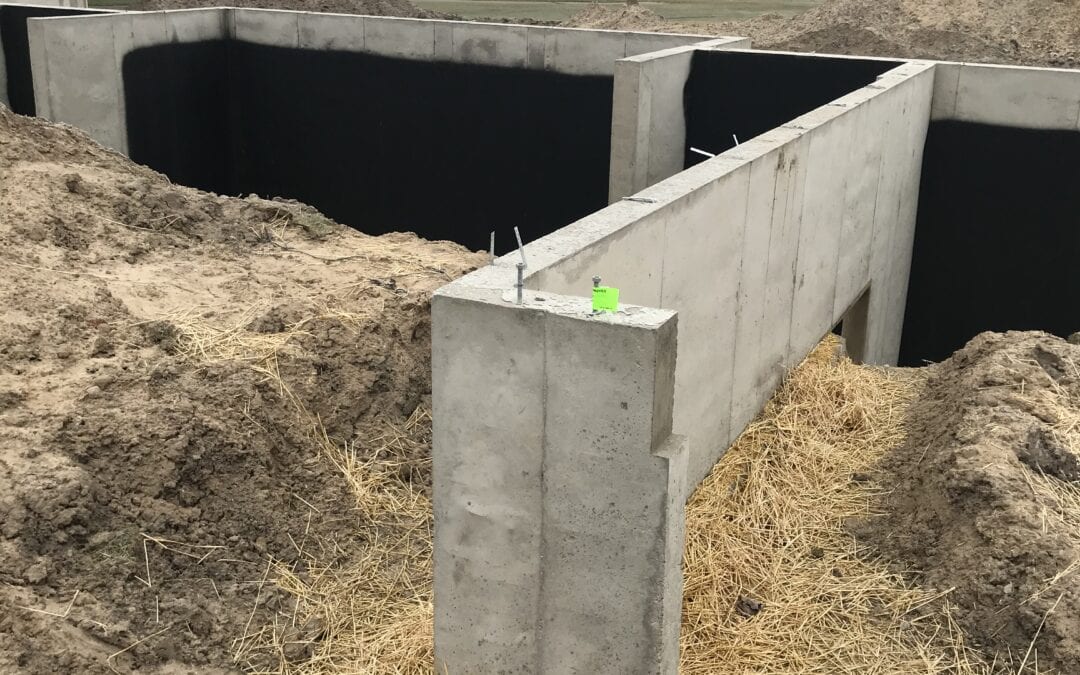Year-round new residential home building, best first-time home building experience
Understanding the time of year that cold weather affects concrete along with the risks that cold weather presents allow you to offset potential problems.
When many of us think of Michigan winters, we think of ice fishing, heavy lake effect snow, snowplows and sledding. We do not immediately think of it being a great time to pour a concrete foundation for our new home. But with some winterizing techniques and additional preparations, pouring your new home foundation in the winter is entirely possible!
Understanding what time of the year cold weather affects concrete and what types of risks cold weather present will allow you to use preparations and techniques to offset the problems that the cold weather present.
Timeframe and Definition of Winter Foundation
It is important to know what time of year and what temperatures affect concrete foundations. During autumn, spring and winter months, cold weather has a significant effect on concrete foundations. The seasonal temperatures that have an effect on the foundation are:
- Average daily temperature is below 40 degrees
- The air temperature is not greater than 50 degrees for a 24-hour period
Problems Cold Weather Presents to Foundations
Cold weather affects the way that concrete cures and the subgrade that the foundation rests upon.
- Make sure that your excavation is not frozen, and the subgrade is frost free. This prevents the ground from shifting and heaving.
- Use insulators to keep warm and accelerators to speed up cure time.
Why the Cold Weather Affects Concrete Foundations
Water is a key component in concrete foundations. Hydration is the process that causes concrete to harden. It occurs as the compounds in cement chemically bond with water. The lower temperatures slow the hydration process. Accelerating agents like chloride can counter the slowing caused by the cold to allow the concrete to cure more quickly and before the water has a chance to freeze. To avoid any cold weather problems:
- Make Sure Ground is Frost Free – It is important to make sure that the excavation is not frozen and that it is frost free. Frozen ground can shift and heave as it thaws. Make sure that all the frost has been removed from the excavation and protect any exposed areas to keep it warm. A couple of inches of straw serves as an insulator that protects the excavation from frost.
- Preventing Concrete from Freezing – Concrete can freeze at temperatures of around 27 degrees. Type III cold weather concrete high strength mixes use extra cement, up to 2% chloride and reduce the amount of fly ash and slag to prevent concrete from freezing.
- Protect the Concrete Until it Reaches Strength – Concrete is protected from freezing when it reaches a strength of approximately 500 psi. After it sets up to that strength, it has absorbed enough of the water that even if it does freeze, there will be no damage. It reaches that strength more slowly in cold weather. Using hot water, concrete mix conditioner and blankets or other insulators will accelerate the curing process. This boosts the internal heat and accelerates the rate the water is absorbed which allows the concrete to reach its critical strength before the water can freeze.
Preparations and Techniques
The key points of interaction between the foundation and cold weather require special attention during the cold weather months. These preparations and techniques will protect your foundation when it is most vulnerable.
- Excavation – covering the exposed dirt and footings with straw, protecting the ground beneath the foundation from freezing
- Wet concrete protection from freezing – condition the mix with chloride, cover curing concrete with blankets, use a slump of 4 inches or less to reduce the percentage of water in the concrete
- Heat accelerator increase heat and increase strength – use hot water and add up to 2% chloride to accelerate setup time by speeding up the hydration reaction
- Use a cold weather mix from the ready mix producer – these cold weather mixes reduce the use of materials like fly ash and slag that generate less internal heat. They use a high strength mix with extra cement which increases the reaction temperature and will hydrate more quickly
- Additional cure time – giving additional cure time before removing the forms and backfilling will allow the foundation additional time to reach the strength required for bearing weight.
Using these techniques, you will keep the excavation frost free, use the correct mix of concrete for cold weather and protect the concrete until it reaches a strength of 500 psi. Pouring a concrete foundation in the cold weather can be done with confidence when you understand when and how to prepare the concrete and the excavation.
